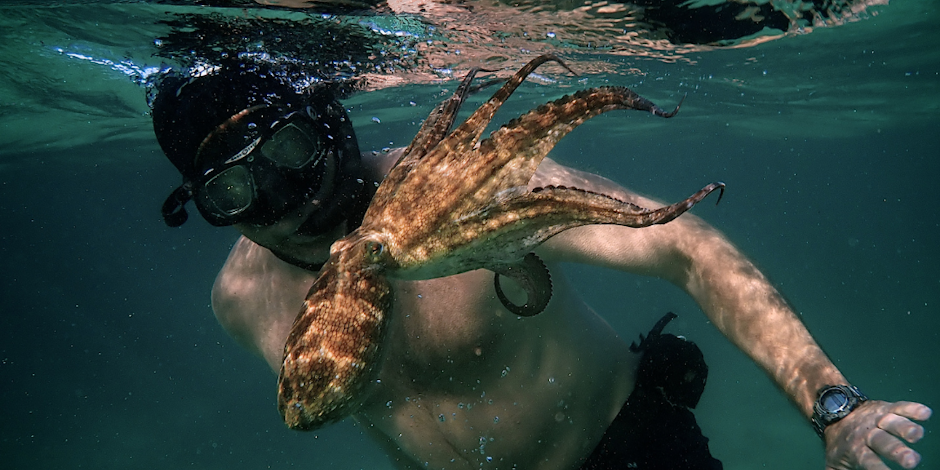How brands can make an impact through a new way of storytelling
In a world full of uncertainty, one thing is clear - climate change is real and it’s here to stay

Change rarely happens overnight, but by being a voice for crucially important stories, brands can help change the narrative around socio-environmental issues and spread the message that these are things we should care about and take action to protect. There is a need for a new way of telling stories for brands that is empowering and accessible, engages the masses and starts giving people the tools they need to make a change.
Brands have a key role to play
According to a recent study by Avaaz, nearly six in 10 young people, aged 16 to 25, were very or extremely worried about climate change, which negatively affects their daily lives. As eco-anxiety rapidly mounts, three-quarters of Gen Z consumers state that sustainability is more important than brand name when making purchase decisions. They not only buy into brands that truly care about the future of the planet, but also encourage them to improve their environmental and social footprint. As a result, a growing number of brands are making purpose an integral part of their mission.
However, it can be easy to fall short on the tools and ways in which to communicate this purpose. Companies must keep their moral compass in check and deliver on these goals, but also tell stories that matter to raise awareness of the environmental and socioeconomic impacts of climate change.
Cold facts don’t work - storytelling is the greatest impact tool
Cognitive psychologist Jerome Bruner suggests that we are 22 times more likely to remember a fact when it has formed part of a story. In addition to being a vital learning tool, storytelling is one of the most powerful tools to inspire, motivate and catalyze change - yet few organizations utilize it, and even fewer fund it. Rather than scaremongering, there is the need to create emotive and empathetic stories with a sharp focus on individual characters that people can connect to. Small in scale but explosive in impact, these atomic stories activate the masses, shift perspectives while driving engagement and allow us to imagine and build a new reality.
‘My Octopus Teacher’, a hit film about the forged relationship between a man at a hinge point in his life and a wild octopus is a great example of this. The film does not confront issues of social justice or politics (which many of the great docs of the last few years have done), it captures a very different feeling. The pandemic strengthened humans’ relationship with the environment, even as the climate crisis grows more urgent.
The film highlights that relatability, humor, talent, emotion, well-developed story arcs and narrative resonate with and inspire people. Not only did it receive rave reviews and 11 international film awards, including the Academy Award for Best Documentary, it had a big impact on audiences worldwide, sparking changes in viewers’ behavior with a large number of individuals saying they will never eat octopus again after watching it.
Tell stories, not your story
A new way of storytelling focusing on inclusivity and diverse voices is necessary. Brands must turn the spotlight away from their own story and become advocates for important stories that encourage direct action, education and impact in the areas that matter most to our planet and people.
Rather than creating a branded film highlighting the absence of palm oil in their products, a cosmetics brand can drive significantly more impact by telling the story of an indigenous community in Indonesia suffering harm since losing their lush ancestral forests to palm oil plantations. A photography brand can shine a light on a specific issue by following a photographer as they investigate a topic and capture shots, highlighting the power of photography as a tool for impact. A fashion brand can tell the stories of innovators subverting the status quo which underlies an unsustainable fashion industry, etc.
Turn intention into action
When discussing impact around environmental issues, awareness is a huge first step, as the more people aware of a subject and emotionally engaging with it through a film, the larger the swell of support for crucial campaigns working on these issues. But how can we turn intention into action? It is essential that brands start giving people the tools they need to make a change. By directing consumers towards resources and active actions and campaigns on the ground, brands can spark awareness and impact both in their community and beyond. Including a clear call to action to support the narrative such as driving viewers to donate to an NGO, volunteer or sign a petition, is a great way to enable change.
One thing is abundantly clear. Brands can’t shift mindsets alone; collective action is necessary in driving change. Like-minded organizations and individuals across the public and private sectors need to engage in communication, as it is only by working collaboratively towards a common goal that we can break the echo chamber and inspire mass audiences to take action.
Sam Sutaria is the VP, Strategy & Development at WaterBear Network

